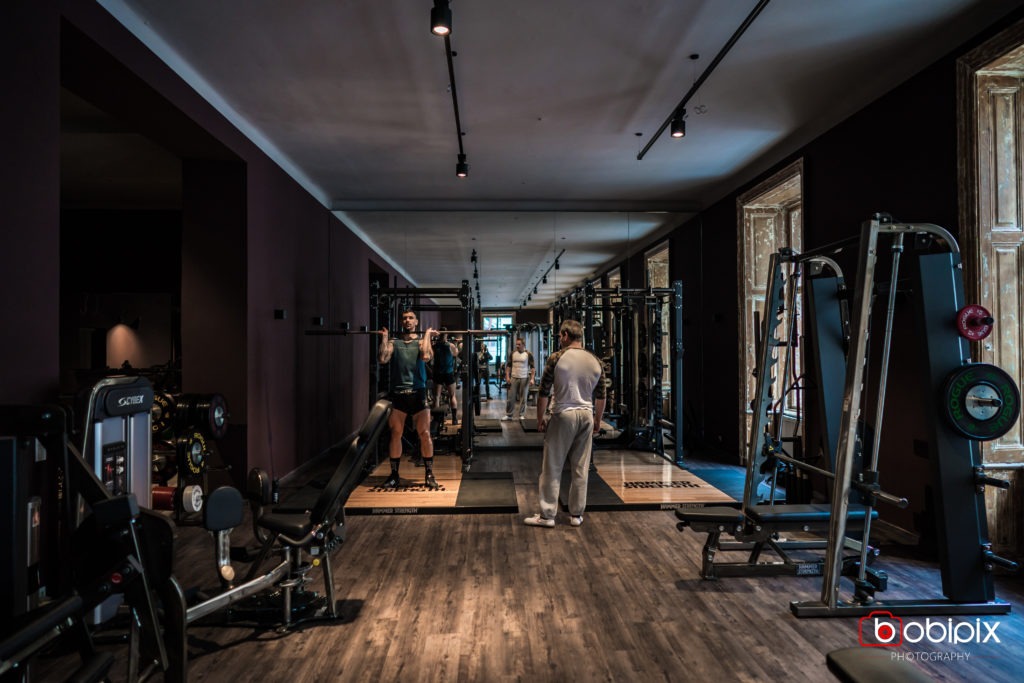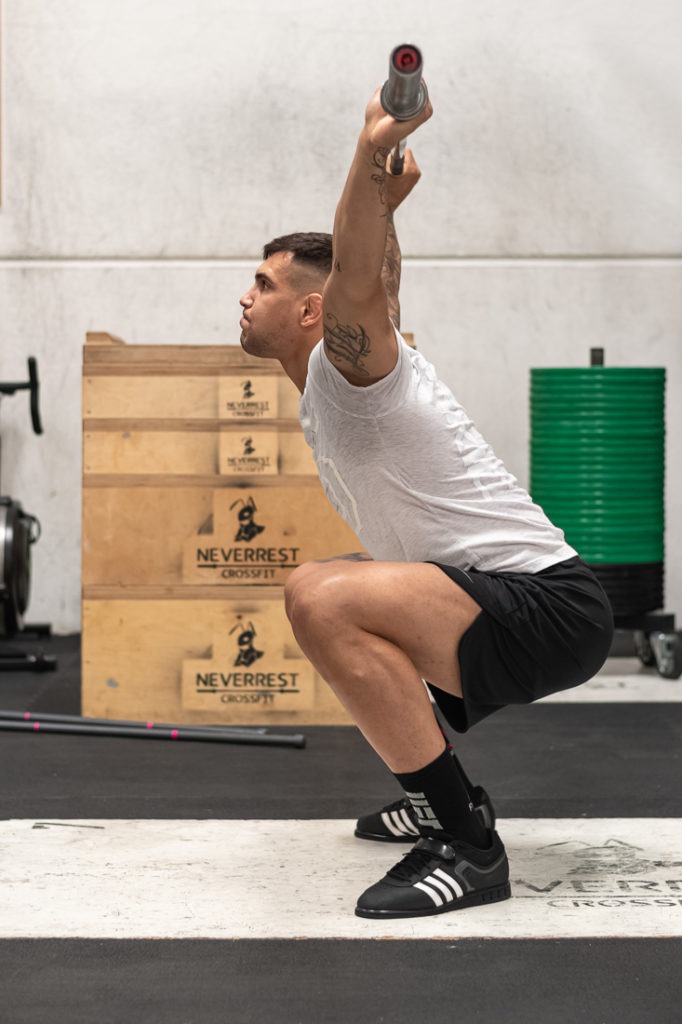As a performance coach, the goal is to improve the physical performance of athletes and at the same time to prevent injuries. Our goal is to get the athletes in top shape for the next competition. For this purpose, different training methods are applied at different training phases. Based on these methods, it is hoped that the athlete will gain an advantage in his or her sport. Olympic weightlifting (OG) is actually a sport in its own right, where the goal is to lift as much weight as possible by snatching or pushing overhead. It requires a high level of quickness in addition to pronounced maximum strength. In team sports or individual sports, you also see coaches integrating OG into training time and time again. Surveys revealed that 88%-100% of all coaches integrate Olympic weightlifting into their training programs (Duehring, 2009; Ebben, 2001).
But why? Does OG have advantages over other training methods? Does it make sense for athletes? Are there perhaps training alternatives that are easier and even more effective?
The purpose of this article is to provide insight into the current data on OG. Furthermore, it should help trainers, coaches, but also athletes to decide whether they want to implement OG in their training plan.
Does OG offer advantages over other training methods?
- Compared to the squat and classic deadlift, exercises from the OG produce significantly higher rapid force development (RFD: rate of force development) at the same load and, for the most part, higher peak power as well as peak force (Kawamori et al. 2006; Swinton et al. 2011; Swinton et al. 2012; Comfort et al. 2011; Hori et al. 2009; Mcbride et al. 2002).
- Baker et al. (1999) found a relationship between Hang Power Clean, 10 m sprint, and 40 m sprint. Hori et al. (2008) come to similar results in Australian rugby players between Hang Power Clean (HPC) and various jump variables.
- In two meta-analyses (Hackett et al. 2015, Berton et al. 2018), OG, in terms of vertical jump height, compared to strength training, performed better by an average of 5%. Compared to the training groups that performed plyometric training, the difference was only trivial and not significant.
- Helland et al. (2017), on the other hand, found no benefits in an isolated OG group, compared with two other training interventions. Even though the differences were not large, the OG group performed worse in pretty much every performance parameter.
- Anecdotally, OG is said to have benefits because athletes who learn to "drop" under the barbell learn to resist high forces. To our knowledge, there is no evidence to support this.

Why do some of the results contradict each other?
Different studies have different methods and of course all studies have their limitations.
- The OG interventions varied in terms of exercise selection and number of repetitions.
- The Jump and Reach Test was often cited, rather than the gold standard Counter Movement Jump (CMJ).
- Low number of participants to calculate effect sizes.
- In the training groups that were listed as OG groups were often combination groups. That is, OG exercises were combined with classical strength training exercises. This is a general problem in sports science, making it difficult to say why the increased jump height occurred in this case. With the exception of Helland's study, every study has combined OG with jumps and/or classical strength exercises.
- Some of the training interventions resembled a bodybuilding program more than a training intervention designed to improve jump height (personal opinion).

Is the catching phase even necessary?
Anyone who has already studied OG a little deeper knows what is meant by Pulling Derivatives. For those who don't know the term: in very simple terms, they are elements from the OG where the Catching Phase is not included. Exercises that belong to this category are the following: Clean Pull (CP), Snatch Pull (SP), High Hang Pull (HHP), Jump Shrug (JS) and Mid Thigh Pull (MTP). Virtually all the exercises of the OG without the catching phase (Catch). Why skip the catching phase? Timothy J. Suchomel, a renowned researcher who has published widely on OG, argues as follows (Suchomel et al. 2015):
- Olympic weightlifting is the only sport where it is necessary to catch the bar.
- The catching phase is where the most common injuries occur (Stone et al. 1994).
- The biggest benefits of OG come from loading the hip extension.
- By omitting the catching phase, you can use loads that would not be possible with the catching phase.
- It appears that the same or even higher performance gains would be produced without the catching phase.
- Pulling derivatives are less complex and therefore faster to learn.

Neverest; Aleksander Rakic, Richard Staudner, 
Neverest; Aleksander Rakic, Richard Staudner,
Are "pulling derivatives" really better?
- Compared to the Mid-Thigh Power Clean, the Mid-Thigh Pull achieves a higher peak power and peak force (Comfort et al. 2011). Furthermore, a higher ground reaction force as well as an improved fast force could be measured with the Mid-Thigh Pull compared to the Power Clean and Hang Power Clean. The effect sizes ranged from large to very large.
- In the Jump-Shrug as well as High-Hang Pull, a higher Relative Peak Power could be observed compared to the Hang-Power Clean (Suchomel and Sole, 2016). In the first 80-85 % of the movement sequence, the values are almost identical. Then at the end, the Jump-Shrug achieves a better final power.
- In a 10-week study (Suchomel et al. 2020), three groups were compared. One group performed OG with the catching phase (pull only). A second group without catching phase and the third group with an overload (overload means using intensities higher than the actual maximum (loads > 100 % 1RM). Findings: No significant differences between groups, although small to moderate positive effects were present for the Pull and OG groups. To illustrate: For CMJ, the Pull group increased by 10.5 %, followed by the Overload group (9 %) and lastly the Catching group (6.5 %).
- Another study (Suchomel et al. 2020) with three similar groups investigated the effect of an intervention on change of direction and sprinting ability (10 m, 20 m, 30 m). One group performed overload training. The second group performed Pulling Derivatives only and the third group performed exercises based on the Catching Phase. The first group significantly improved the 10 m sprint, compared to the Catch group, but not compared to the Pull group. Additionally, the first group had the best times in the 20 m and 30 m sprints, although not significantly. Despite no statistical significance, the trend was slightly better for the group that partially overloaded the bar. This may be due to the fact that it was a completely new stimulus and that this positive effect no longer provides an advantage in a long-term training intervention. Another interesting finding from the study was that the power clean in this intervention tended to be improved the most by the overload group (6.8 %), followed by the pull group (3.5 %) and catch group (3.5 %).
Summary:
- There are correlations between power clean performance, hang power clean performance, and athletic ability.
- Compared to classical strength training, in combination with other exercises, OG seems to be better, in terms of vertical jump height. Compared to plyometric jumps, there are no meaningful differences.
- It is probably not mandatory to include the catching phase. It may even lead to slightly worse results.
- Overloading based on pulling elements can potentially lead to better results in short interventions.
Practical recommendations
Now, briefly, here is my personal opinion on whether and to what extent I would implement OG for athletes. This is based on the one hand on the data we currently have available and on my experience, what I have seen and experienced so far.
- In a long term training setup (3-5+ years) I would integrate OG if the resources (good trainer, mobility) are there. I would go for pulling elements for the most part, but also integrate exercises like the power clean (for variety and fun).
- If you want to prepare an athlete who has no experience with OG for a competition or improve performance in the short term, pulling derivatives offer a good alternative to classic OG (due to reduced risk of injury, faster learning effect and potentially better adaptations).
- It definitely makes sense to incorporate elements from OG alongside classic strength training and plyometric jumps to cover the entire strength-speed spectrum.
Author: Pit Hausemer
Bibliography:
Baker, D., & Nance, S. (1999). The Relation Between Running Speed and Measures of Strength and Power in Professional Rugby League Players. Journal of Strength and Conditioning Research, 13(3), 230-235. doi:10.1519/00124278-199908000-00009.
Berton, R., Lixandrão, M. E., Silva, C. M., & Tricoli, V. (2018). Effects of weightlifting exercise, traditional resistance and plyometric training on countermovement jump performance: A meta-analysis. Journal of Sports Sciences, 36(18), 2038-2044. doi:10.1080/02640414.2018.1434746.
Berton, R., Lixandrão, M. E., Silva, C. M., & Tricoli, V. (2018). Effects of weightlifting exercise, traditional resistance and plyometric training on countermovement jump performance: A meta-analysis. Journal of Sports Sciences, 36(18), 2038-2044. doi:10.1080/02640414.2018.1434746.
Comfort, P., Allen, M., & Graham-Smith, P. (2011). Comparisons of Peak Ground Reaction Force and Rate of Force Development During Variations of the Power Clean. Journal of Strength and Conditioning Research, 25(5), 1235-1239. doi:10.1519/jsc.0b013e3181d6dc0d.
Comfort, P., Allen, M., & Graham-Smith, P. (2011). Kinetic Comparisons During Variations of the Power Clean. Journal of Strength and Conditioning Research, 25(12), 3269-3273. doi:10.1519/jsc.0b013e3182184dea.
Duehring, M. D., Feldmann, C. R., & Ebben, W. P. (2009). Strength and conditioning practices of United States high school strength and conditioning coaches. Journal of Strength and Conditioning Research, 23(8), 2188-2203. doi:10.1519/jsc.0b013e3181bac62d.
Ebben, W. P., & Blackard, D. O.. (2001). Strength and conditioning practices of National Football League strength and conditioning coaches. Journal of Strength and Conditioning Research, 15(1), 48-58. doi:10.1519/00124278-200102000-00009.
Hackett, D., Davies, T., Soomro, N., & Halaki, M. (2015). Olympic weightlifting training improves vertical jump height in sportspeople: A systematic review with meta-analysis. British Journal of Sports Medicine, 50(14), 865-872. doi:10.1136/bjsports-2015-094951.
Helland, C., Hole, E., Iversen, E., Olsson, M. C., Seynnes, O., Solberg, P. A., & Paulsen, G. (2017). Training Strategies to Improve Muscle Power. Medicine & Science in Sports & Exercise, 49(4), 736-745. doi:10.1249/mss.00000000001145.
Hori, N., Newton, R. U., Andrews, W. A., Kawamori, N., Mcguigan, M. R., & Nosaka, K. (2008). Does Performance of Hang Power Clean Differentiate Performance of Jumping, Sprinting, and Changing of Direction? Journal of Strength and Conditioning Research, 22(2), 412-418. doi:10.1519/jsc.0b013e318166052b.
Hori, N., Newton, R. U., Kawamori, N., Mcguigan, M. R., Kraemer, W. J., & Nosaka, K. (2009). Reliability of Performance Measurements Derived From Ground Reaction Force Data During Countermovement Jump and the Influence of Sampling Frequency. Journal of Strength and Conditioning Research, 23(3), 874-882. doi:10.1519/jsc.0b013e3181a00ca2.
Kawamori, N., Rossi, S. J., Justice, B. D., Haff, E. E., Pistilli, E. E., Oʼbryant, H. S., . . . Haff, G. G. (2006). Peak Force And Rate Of Force Development During Isometric And Dynamic Mid-Thigh Clean Pulls Performed At Various Intensities. Journal of Strength and Conditioning Research, 20(3), 483-491. doi:10.1519/00124278-200608000-00005.
Mcbride, J. M., Triplett-Mcbride, T., Davie, A., & Newton, R. U. (2002). The Effect of Heavy- Vs. Light-Load Jump Squats on the Development of Strength, Power, and Speed. Journal of Strength and Conditioning Research, 16(1), 75-82. doi:10.1519/00124278-200202000-00011.
Stone, M. H., Fry, A. C., Ritchie, M., Stoessel-Ross, L., & Marsit, J. L. (1994). Injury Potential and Safety Aspects of Weightlifting Movements. Strength And Conditioning Journal, 16(3), 15. doi:10.1519/1073-6840(1994)0162.3.co;2
Suchomel, T. J., & Sole, C. J. (2017). Force-Time-Curve Comparison Between Weight-Lifting Derivatives. International Journal of Sports Physiology and Performance, 12(4), 431-439. doi:10.1123/ijspp.2016-0147.
Suchomel, T. J., Comfort, P., & Stone, M. H. (2015). Weightlifting pulling derivatives: Rationale for implementation and application. Sports Medicine, 45(6), 823-839. doi:10.1007/s40279-015-0314-y.
Suchomel, T. J., Mckeever, S. M., & Comfort, P. (2020). Training With Weightlifting Derivatives. Journal of Strength and Conditioning Research, 34(7), 1808-1818. doi:10.1519/jsc.00000000003639.
Suchomel, T. J., Wright, G. A., Kernozek, T. W., & Kline, D. E. (2014). Kinetic Comparison of the Power Development Between Power Clean Variations. Journal of Strength and Conditioning Research, 28(2), 350-360. doi:10.1519/jsc.0b013e31829a36a3.
Swinton, P. A., Lloyd, R., Keogh, J. W., Agouris, I., & Stewart, A. D. (2012). A Biomechanical Comparison of the Traditional Squat, Powerlifting Squat, and Box Squat. Journal of Strength and Conditioning Research, 26(7), 1805-1816. doi:10.1519/jsc.0b013e3182577067.
Swinton, P. A., Stewart, A. D., Keogh, J. W., Agouris, I., & Lloyd, R. (2011). Kinematic and Kinetic Analysis of Maximal Velocity Deadlifts Performed With and Without the Inclusion of Chain Resistance. Journal of Strength and Conditioning Research, 25(11), 3163-3174. doi:10.1519/jsc.0b013e318212e389.

